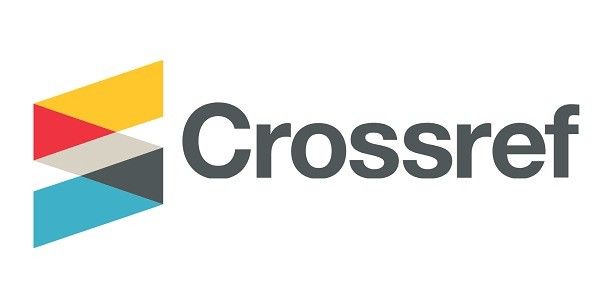As the digital age continues transforming how we access and share information, the need for effective ways to identify and reference digital objects has become increasingly important. The Digital Object Identifier is a system developed to provide a persistent link to digital objects, such as journal articles, books, and datasets. This article will explore what Digital Object Identifier (DOI) stands for, how it works, and how to refer to or cite digital objects using it.
What is a Digital Object Identifier (DOI)?

A Digital Object Identifier is a unique alphanumeric string assigned to a digital object, such as a journal article, book, or dataset. This string provides a persistent link to the digital object, ensuring it can be found and accessed even if the web address or URL changes. This string consists of a prefix and a suffix, separated by a forward slash, that identifies the object and provides a link to it. For example, the Digital Object Identifier for the article might look like https://doi.org/10.2354/s00369-030-05722-z.
Know more about DOI.
Dissection of Digital Object Identifier or DOI Format Explanation
All DOIs begin with a 10 and contain a prefix and a suffix separated by a slash.
- Resolver Service: https://doi.org/ –
- Prefix for assigning authority: 10.2354/
- suffix (resource): s00369-030-05722-z
Who manages Digital Object Identifier (DOI)?

The International DOI Foundation (IDF) developed the Digital Object Identifier to provide a persistent identifier that would remain the same even if the web address or URL of the object changed. This ensures that digital objects can be found and accessed reliably over time, even if moved to a new server or web address.
Registration agencies typically do the management of Digital Object Identifier. These registration agencies assign DOIs, maintain the Digital Object Identifier database, and provide DOI resolution services to ensure that DOIs link to the correct digital objects.

Some major registration agencies for DOIs include Crossref, DataCite, and mEDRA. These organizations work with publishers, libraries, and other stakeholders to ensure that DOIs are assigned and used correctly and continue to function over time.
How does the Digital Object Identifier (DOI) system work?
When a digital object is assigned a DOI, it is registered with a DOI registration agency, such as Crossref or DataCite. These agencies maintain a central database of DOIs and their associated metadata, such as the object’s author, title, and publication information.

When a user clicks on a DOI link, their web browser sends a request to the DOI resolver, a service provided by the DOI registration agency. The resolver looks up the DOI in the central database and returns the metadata for the object. This metadata includes a link to the object, which the user can click to access.
How to get Digital Object Identifier (DOI)?
- Determine if your content is eligible for a DOI: DOIs are typically assigned to digital content that is scholarly, research-oriented, or otherwise useful to the academic community. Content eligible for a DOI includes journal articles, conference papers, data sets, and more.
- Identify a registration agency: Several registration agencies assign DOIs. Some of the most popular ones include CrossRef, DataCite, and mEDRA. Identify the agency that is most appropriate for your content.
- Register for an account: To obtain a DOI, you will need to register for an account with the registration agency you have chosen. You may need to pay a fee for registration.
- Submit metadata: Once registered, you must submit metadata about your content, such as the title, author, publisher, and publication date. The registration agency will use this metadata to create a DOI for your content.
- Receive the DOI: After the registration agency has verified your metadata, they will assign a DOI to your content. You will receive the DOI, which you can use to link to your content.
Sometimes Digital Object Identifier is known as Crossref DOI.
It’s important to note that the specific steps and requirements for obtaining a DOI may vary depending on your chosen registration agency and the type of content you are registering for. It’s best to consult the agency’s website for more detailed instructions.
To get DOI at an affordable price click below.
Get DOI >>
Advantages of Digital Object Identifier (DOI)

DOI (Digital Object Identifier) is a persistent identifier that uniquely identifies digital objects such as scholarly articles, datasets, and other types of content. The advantages of using DOI include the following:
- Persistent Identification: DOIs provide persistent identification of digital objects, meaning that even if the location of the digital object changes, the DOI will remain the same. This ensures that the object can always be found and accessed. DOIs provide a persistent link to digital objects, ensuring they can be accessed reliably over time. This is especially important for sources that may be moved to a new web address or URL.
- Improved Discoverability: DOIs make it easier for users to discover and access digital objects. They can be linked to the object and easily shared among researchers, publishers, and other stakeholders.
- Credibility: DOIs are assigned by registration agencies, which helps establish the credibility of the digital object. They also provide metadata that can be used to establish the authorship and ownership of the object, making it easier to attribute and credit the work. DOIs provide accurate and reliable metadata for digital objects, making it easier for readers to find and access them.
- Increased citation tracking: DOIs can be used to track citations of digital objects, making it easier for researchers to find related works and analyze citation patterns. Using DOIs for citing sources can help to ensure that you are providing proper credit to the authors of the sources you are citing.
- Standardization: DOIs provide a standardized way of identifying digital objects, making it easier for publishers and other stakeholders to manage and share content.
- Interoperability: DOIs are interoperable across different platforms and systems, making it easier for researchers to access and use digital objects across different disciplines and fields.
Overall, DOIs provide a standardized, persistent, and credible way to identify and access digital objects, making it easier for researchers to find, access, and cite relevant works.
How do I refer to or cite using a DOI?
To begin, I would state that when citing sources in your research papers, it’s essential to use a consistent format that follows the guidelines of the citation style used in your field. However, most citation styles now include provisions for citing sources using DOIs.
Here is an example of how to use a DOI to cite a journal article in APA format:
Author Lastname, First Initial. (Year). Title of article. Title of Journal, volume number(issue number), page numbers. Doi: xx.xxxx/xxxxxxx

Explanation of the above example:
- The author’s last name and first initial are listed first.
- Followed by the year of publication in parentheses.
- The article’s title is listed next.
- Followed by the title of the journal in italics.
- The volume and issue number are in parentheses, as are the page numbers.
- Finally, the DOI is listed after the page numbers, preceded by “doi:”.
Here is an example of how to use a DOI to cite a book in MLA format:
Author Lastname, Firstname. Title of Book. Publisher, Year of Publication. Doi: xx.xxxx/xxxxxxx

Explanation of the above example:
- The author’s last and first names are listed first,
- Followed by the book’s title.
- The publisher’s name is listed next,
- Followed by the year of publication.
- Finally, the DOI is listed after the year of publication as “doi:”.
DOIs can also be used for other digital objects like datasets and reports. When citing these types of sources, follow the specific guidelines for your citation style.
Important facts for using DOI in citation
- If reference material has DOI, it must be included in the citation; it doesn’t matter whether you used the online or print versions.
- If the reference material has DOI and URL both, then consider DOI only for citation purposes.
- You can include the DOI in your reference list or citation to refer to or cite a digital object using a DOI.
- The DOI should be included at the end of the citation, after the page range or other publication information, and preceded by “https://doi.org/”.
Conclusion
Using DOIs to cite sources in your research papers is an effective way to provide persistent links to digital objects and to ensure that you give proper credit to the authors of your sources. By following the guidelines of your citation style and including DOIs in your citations, you can help to make your research papers more accurate and reliable for your readers.
